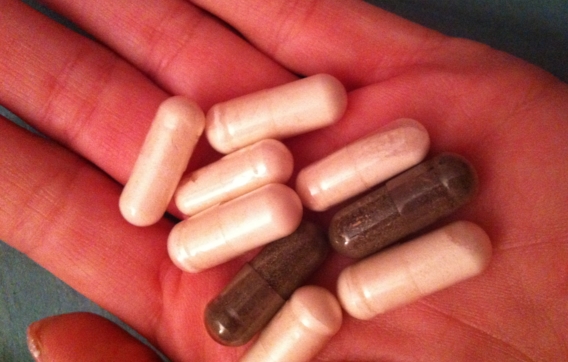Are you taking your probiotics the right way? Common mistakes to avoid
07/24/2019 / By Edsel Cook

Probiotic supplements improve health in many ways. To get the most out of these supplements, avoid these eight common mistakes when picking a probiotic brand and taking the supplement.
First, do not buy the cheapest probiotics. Cheap brands save on manufacturing costs by adding potentially harmful ingredients as fillers. The presence of corn starch, gluten, or soy lecithin is not only unnecessary but may also cause unwanted effects like inflammation.
To be safe, aim for a balance between price and quality. Make sure the probiotic supplement is pure and of high quality. Get the product from a trusted health food store or health practitioner.
Second, store the supplement the right way. Check the packaging to find out the proper method of storage. Shelf-stable probiotics don’t need refrigeration, but they do need a dark and dry area with consistent temperature. Probiotics that require low storage temperature, on the other hand, need to go into the fridge.
On a related note, keep track of the expiration date of the probiotic formula. Consume the supplement before that date. (Related: Reduce inflammation and improve your mood with these healthy, fermented foods.)
Pick the right strain of probiotics and take them at the right time
Third, avoid taking antibiotics and probiotics at the exact same time. The two are opposites. While antibiotics are useful, they can also wipe out good bacteria in the body, allowing bad bacteria to flourish.
A typical antibiotic gets taken every six to 12 hours. Wait for at least three hours after the latest dose before taking probiotic supplements. Probiotics help the gut recover good bacteria. They also reduce the adverse effects of antibiotics.

Fourth, take the probiotics at the correct time. Check the product container or label for instructions. Some strains need food to keep the acid in the stomach from destroying them. No instructions? Shelf-stable probiotics will survive a trip through an empty stomach.
Fifth, pick the right strain of good bacteria for your needs. There are probiotics designed to help heal the gut, improve digestion, and alleviate anxiety. Ask an expert.
To improve general health, take a probiotic supplement that contains both Lactobacillus and Bifidobacteria strains. It will replenish the numbers of Lactobacillus in the small intestine and the Bifidobacteria in the colon.
Take the right dosage of probiotic supplements
Sixth, take probiotic supplements consistently. Beneficial bacteria have shorter lifespans than harmful microbes, so they need constant replenishment. Take the supplement every day, preferably at the same time each day to get the most out of it.
Seventh, make sure to get the right dose of probiotics. While it isn’t as deal-breaking as picking the wrong strain, getting the wrong dose of good bacteria may not be as beneficial. Therefore, always take the dose recommended by your health care practitioner.
For people who are taking probiotics on their own initiative, 10 to 25 billion colony forming units (CFUs) is a good number. Patients with severe health problems may need close to 100 billion CFUs, depending on their symptoms.
Eighth, take probiotics together with prebiotics. Prebiotics are foods that contain large amounts of dietary fiber. They nourish probiotics and help them increase their numbers. Vegetable fiber is the best prebiotic food – it even fights rotovirus infections.
Recommended prebiotic foods include apples, artichokes, asparagus, bananas, cabbages, garlic, jicama, leafy greens, leeks, and onions. People who balk at the idea of a high-fiber diet may start with apples, bananas, and leafy greens.
Sources include:
Submit a correction >>
Tagged Under:
alternative medicine, Antibiotics, bad bacteria, Bifidobacteria, dietary fiber, digestion, digestive health, fruits, good bacteria, gut bacteria, gut health, inflammation, Lactobacillus, prebiotics, probiotics, supplements, vegetables
This article may contain statements that reflect the opinion of the author





















